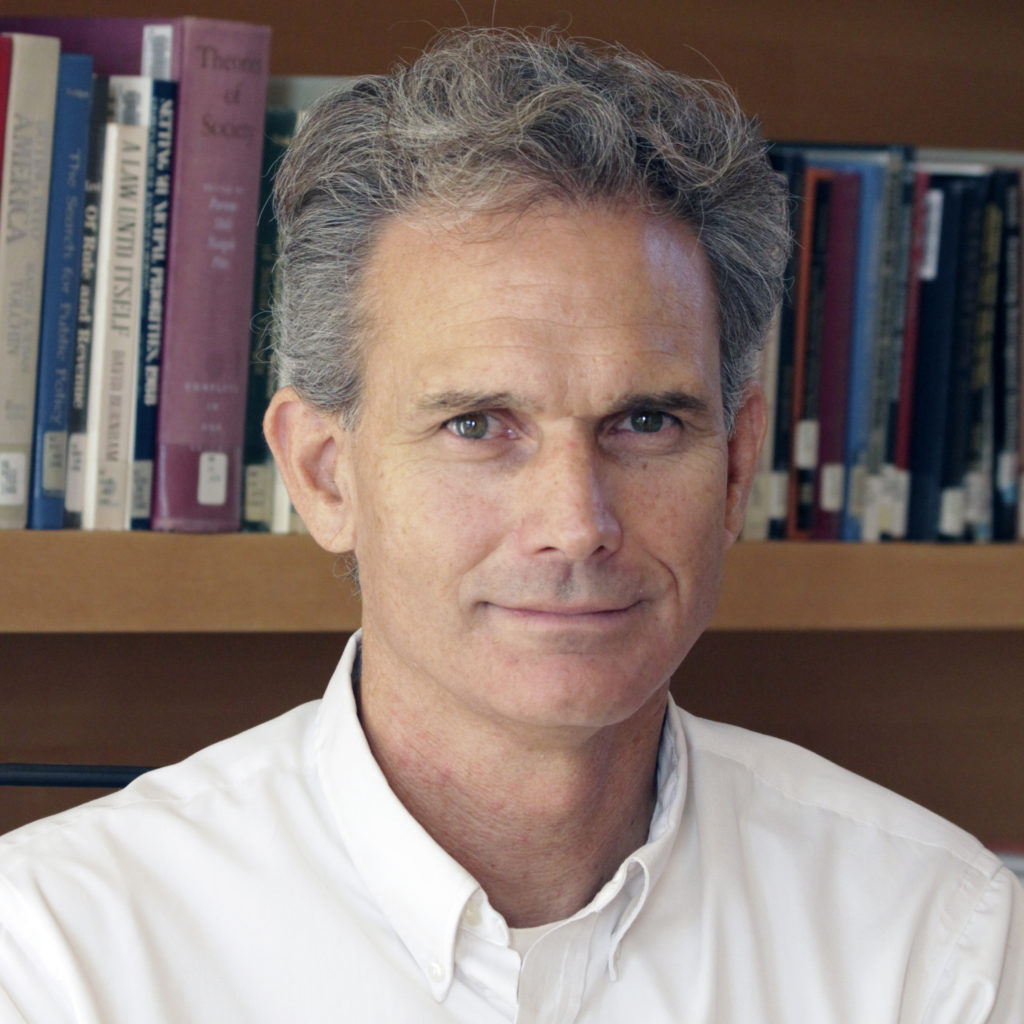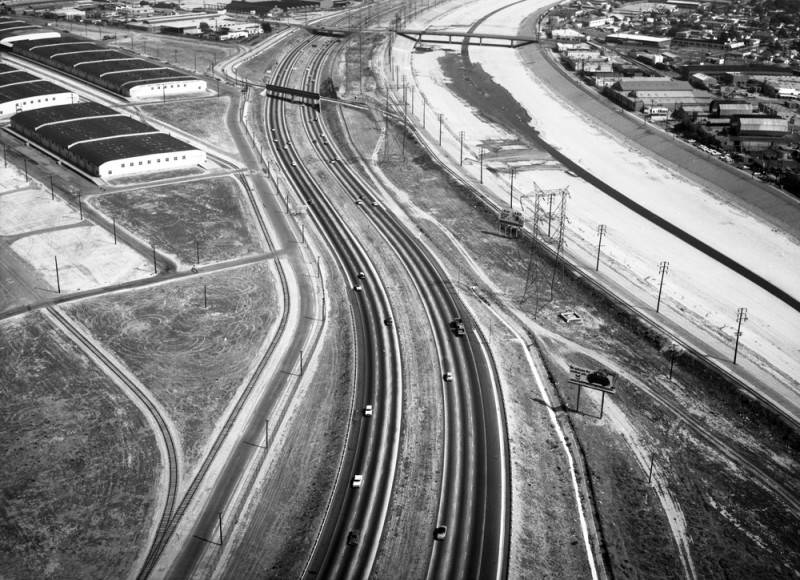Brian Biery is a community organizer, documentary photographer, and Adjunct Professor of Advocacy/Social Justice at Pacific Oaks College. His world view has been shaped by serving as a Peace Corps Volunteer in Guatemala and by engaging his community on social justice issues for over 20 years.
The construction of freeways and interstate highways has long been the subject of intense scrutiny. Who decides which route should be taken and what is their rationale for making that decision? How do highways impact communities of color? How are displaced families relocated and made whole financially? What are the health impacts of major highways located adjacent to residential areas? Which communities suffer the brunt of those impacts? And, here in Southern California, will the freeway soon become obsolete and require further enhancements to meet the needs of a society that is dependent on motorized vehicles?
Historically racial and economic segregation in urban communities is often described as a natural consequence of poor choices by individuals. In reality, however, racially and economically segregated cities are the result of many factors, including the nation’s interstate highway system. In states around the country, highway construction displaced poor and minority households. And it cut the heart and soul out of thriving minority communities as homes, churches, schools, and businesses were destroyed.
“For example, the colossal intersection of the 5, the 10, the 101 and the 60 freeways destroyed Boyle Heights. It was a thriving, ethnically mixed neighborhood.” And in Pasadena, the construction of the 210 and 710 freeways caused the forced removal of several Black owned businesses such as Woods-Vallentine Mortuary, religious institutions like 1st AME Church, in addition to wiping out the neighborhood school (Lincoln School) and hundreds of Black households.
In some communities, the highway system has been a tool of an explicitly segregationist agenda, erecting a wall that separated White and Black communities and protected White people from Black migration. In the 1930’s, the Federal Housing Administration’s underwriting manual stated that “Incompatible racial groups should note be permitted to live in the same communities.” The FHA went on to recommend that highways (freeways) would be an excellent mechanism to separate black neighborhoods from white neighborhoods.
In these ways, construction of the interstate highway and regional freeway systems have significantly contributed to the residential concentration of race and poverty, and caused physical, economic, and psychological traumas in these marginalized neighborhoods that continue to persist today.
Interestingly, the current interstate highway system is on the verge of possible transformational change. Aging highways around the country are crumbling or insufficient to meet growing demand and must be rebuilt or replaced. The possibility of significant infrastructure development offers an opportunity to address some of the harm caused by highways and freeways, to rebuild impacted communities, and to advance racial equity.
With respect to the 710 freeway corridor, it could be a national example for the creative transformation of highways. Affordable housing, abundant open space, natural habitat protection, walkable streets, connected neighborhoods, dynamic creative places, reliable public transportation, and much more, could be a part of this changing sector of the community. So how might we ensure that these aspirations become reality?
One way would be by completing a comprehensive racial equity impact study prior to any further development. To conduct a thorough and comprehensive analysis of how a proposed action, policy, or practice will affect racial and ethnic groups. Racial equity impact studies have been used in a variety of contexts to ensure that all members of the community benefit from proposed projects, programs, events, etc. Why not use a similar lens for a freeway redevelopment project as well? When we solve for racial inequity everyone benefits. And we will hopefully ensure that the mistakes of the past will not be repeated again.
 Brian Biery is a community organizer, documentary photographer, and Adjunct Professor of Advocacy/Social Justice at Pacific Oaks College. His world view has been shaped by serving as a Peace Corps Volunteer in Guatemala and by engaging his community on social justice issues for over 20 years.
Brian Biery is a community organizer, documentary photographer, and Adjunct Professor of Advocacy/Social Justice at Pacific Oaks College. His world view has been shaped by serving as a Peace Corps Volunteer in Guatemala and by engaging his community on social justice issues for over 20 years.
Resources:
- What Did Interstate Highways Do to Urban Neighborhoods? — Nall & O’Keeffe
- Executive Order On Advancing Racial Equity and Support for Underserved Communities Through the Federal Government — Biden
- Why Working for Racial Equity Benefits Everyone — Local and Regional Government Alliance on Race & Equity
- America 2021: The Opportunity to Advance Racial Equity — McKinsey & Company (Chui, Prince, Stewart)
- The Competitive Advantage of Racial Equity — Blackwell, Kramer, Vaidyanathan Iyer, Kirschembaum
- LA freeways: The infrastructure of racism — hosted by Steve Chiotakis
- ‘White Men’s Roads Through Black Men’s Homes’: Advancing Racial Equity Through Highway Reconstruction — Archer
- Holy Post – Race in America — Phil Vischer (YouTube)
- Removing Urban Freeways Can Improve Neighborhoods Ravaged by Decades of Racist Policies — Wolf
- U.S. freeways flattened Black neighborhoods nationwide — Sullivan (Reuters)




Recent Comments